“The mystical experience is doubly valuable; it is valuable because it gives the experiencer a better understanding of (themselves) and the world and because it may help (them) to lead a less self-centered and more creative life.”
— Aldous Huxley
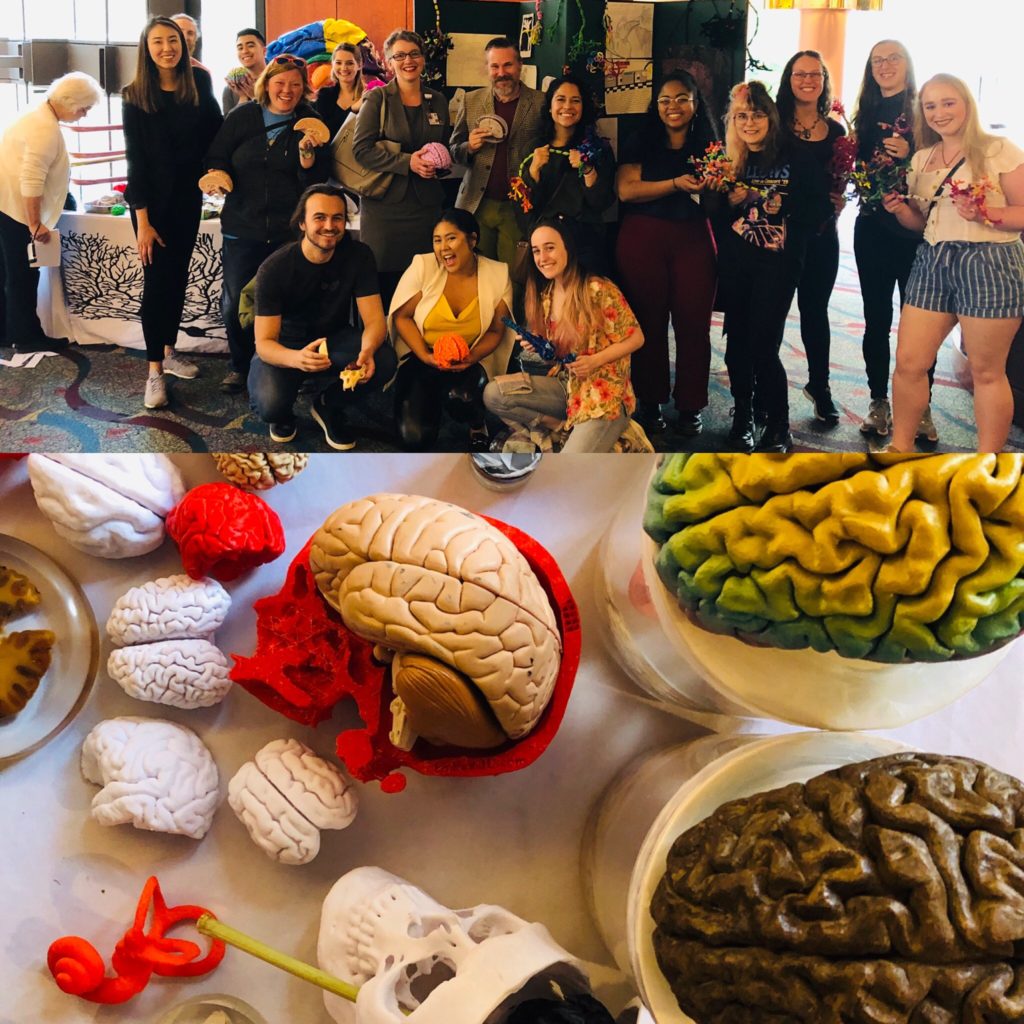
Twenty seven (!) informed undergraduates from Portland State University and neighboring campuses attended the last of three OHSU Brain Institute lectures, all addressing this year’s theme of mind altering medicine…
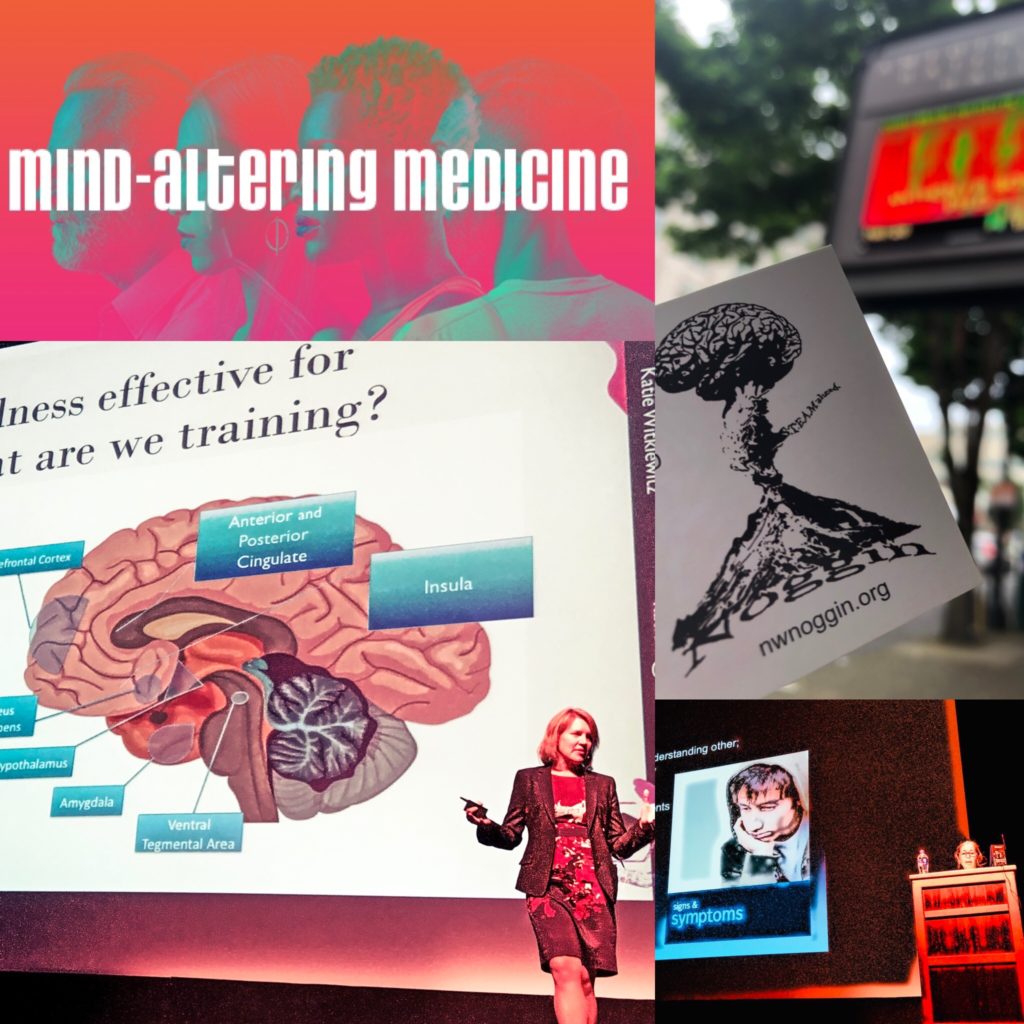
LEARN MORE: Who attended the third OBI lecture?
KATIE WITKIEWITZ: Power to Choose: Mindfulness & Addiction
LYNNE SHINTO: Treating the whole person
Our damp and mossy Pacific Northwest is fertile ground for fungi, including the delicate Psilocybe genus of mushroom, which creates a chemical known as psilocybin. Psilocybin is converted by the liver into psilocin, which has powerful and intriguing effects on how we think and feel…

LEARN MORE: The many roles of mushrooms
We brought buckets of extra noggins and colorful brain-linked art to Portland’s Newmark Theater to talk neuroscience, and hear Dr. Anthony Bossis, a clinical psychologist and Assistant Professor of Psychiatry at the NYU School of Medicine, discuss his new research on the potential for psychedelics (including psilocybin) to effectively treat anxiety and depression at the end of life…
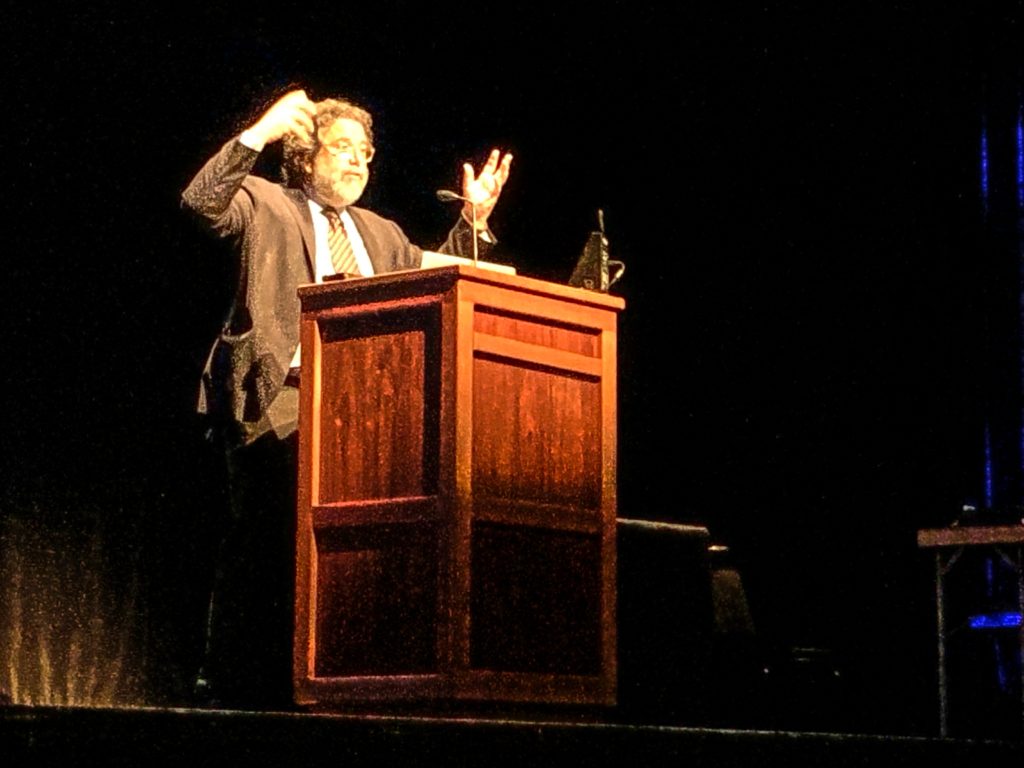
“Do you know about psychedelic mushrooms?” Dr. Bossis asked his Portland audience. They responded with laughter, and a resounding yes! “So…OK, this is not the reaction I get in South Carolina!”
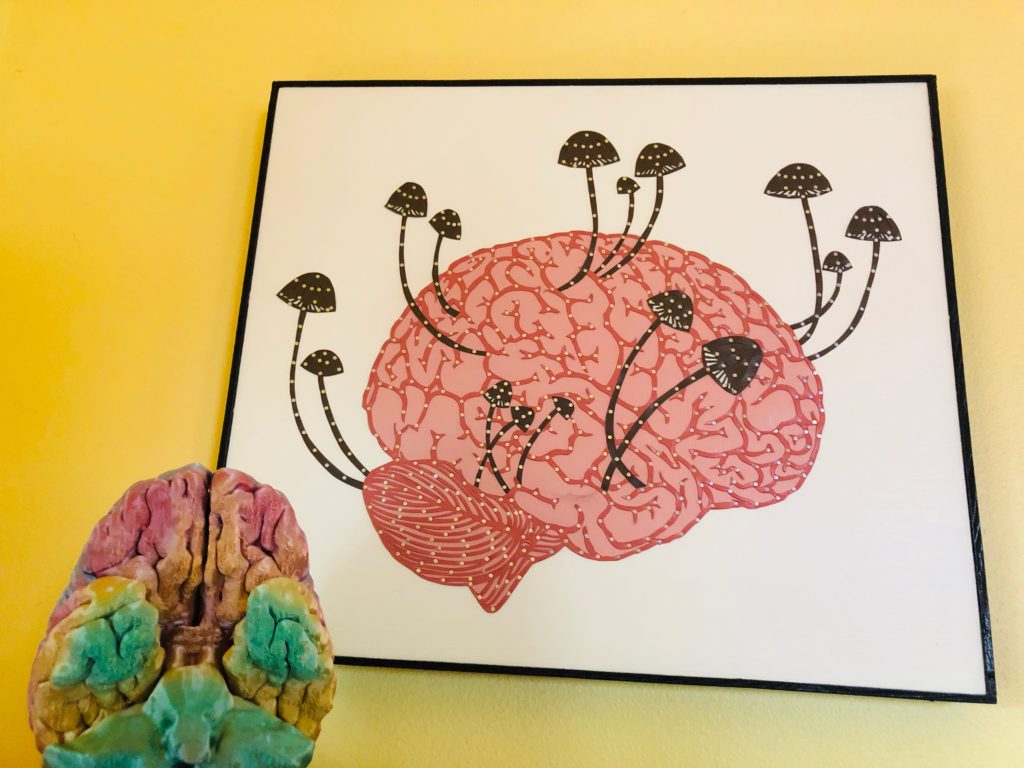
LEARN MORE: Oregon Psilocybin Program Initiative (2020)
LEARN MORE: The Official PSI 2020 Campaign Website
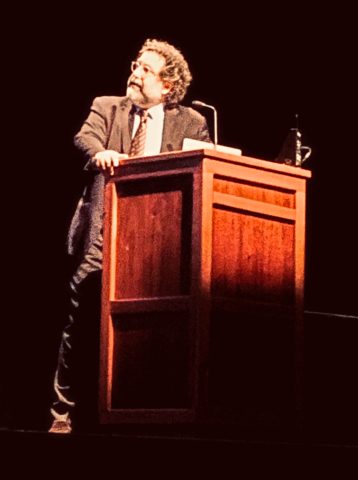
“But this topic is so important,” continued Dr. Bossis. People struggle at the end of life. “There’s a funny phrase in palliative care: a ‘good death.’ Like this image of Buddha on his deathbed. But we don’t die well in this country.”
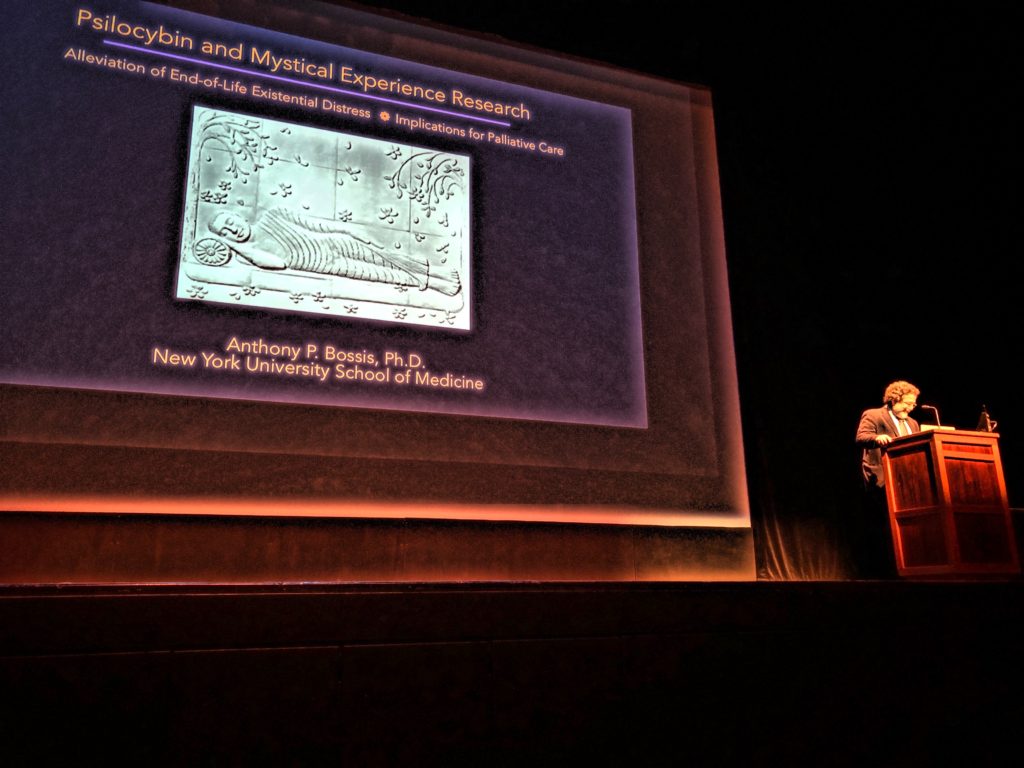
LEARN MORE: Dying in America
LEARN MORE: A Profile of Death and Dying in America
LEARN MORE: What Are Palliative Care and Hospice Care?
LEARN MORE: Symptom trends in the last year of life, 1998-2010
Dr. Bossis briefly described ancient and secret initiation rites in Greece known as the Eleusinian Mysteries (performed annually for almost 2000 years!) which involved drinking Kykeon, said by Homer to contain “water, barley, herbs” – and, according to some, psychedelic drugs.
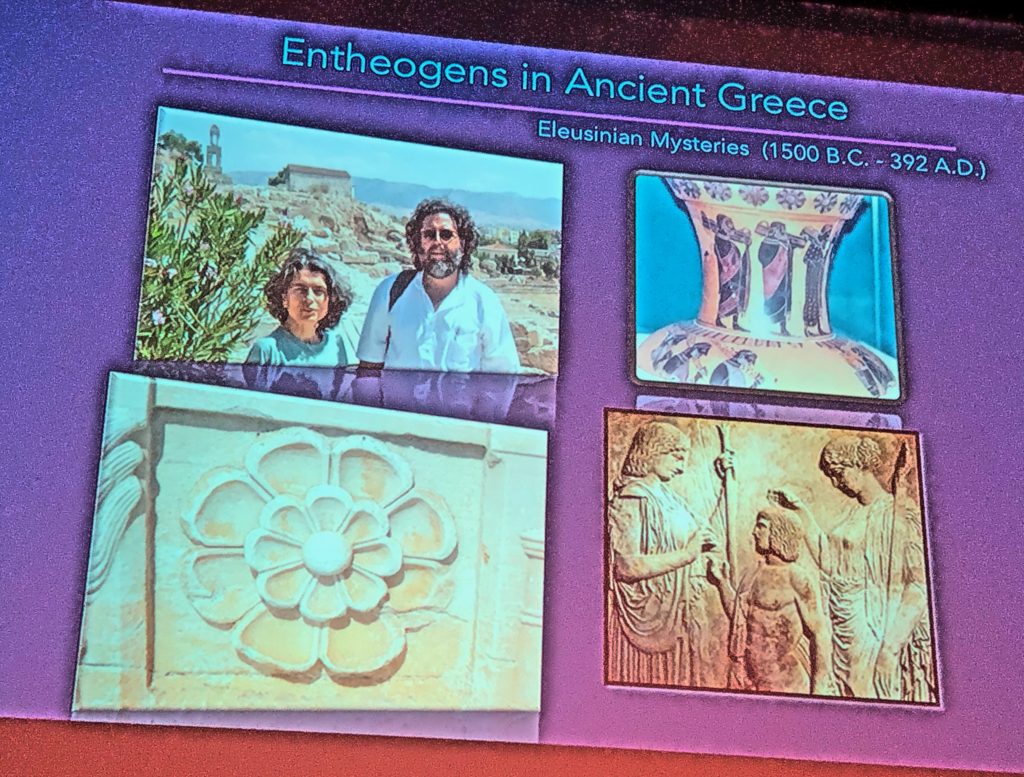
“These mystical experiences have been around since the dawn of humanity,” declared Dr. Bossis. And psychedelics, he added, “do not – they cannot – lead to addiction. And lifetime use of psychedelics is linked to reduced suicidal ideation, reduced suicide. There is great promise in this research…”

LEARN MORE: Psychedelics
LEARN MORE: Sacred psychiatry in ancient Greece
LEARN MORE: The Eleusinian Mysteries: The Rites of Demeter
LEARN MORE: Clinical potential of psilocybin as a treatment for mental health conditions
LEARN MORE: Michael Pollan On the ‘New Science’ Of Psychedelics
LEARN MORE: The Trip Treatment
So why aren’t psychedelics more widely studied, or therapeutically prescribed? During the 1950’s there was tremendous interest in the United States, especially after an amateur mycologist named Gordon Wasson wrote an article in the popular Life magazine about his participation in a velada (or ‘healing ceremony’) led by a Mexican shaman named María Sabina.
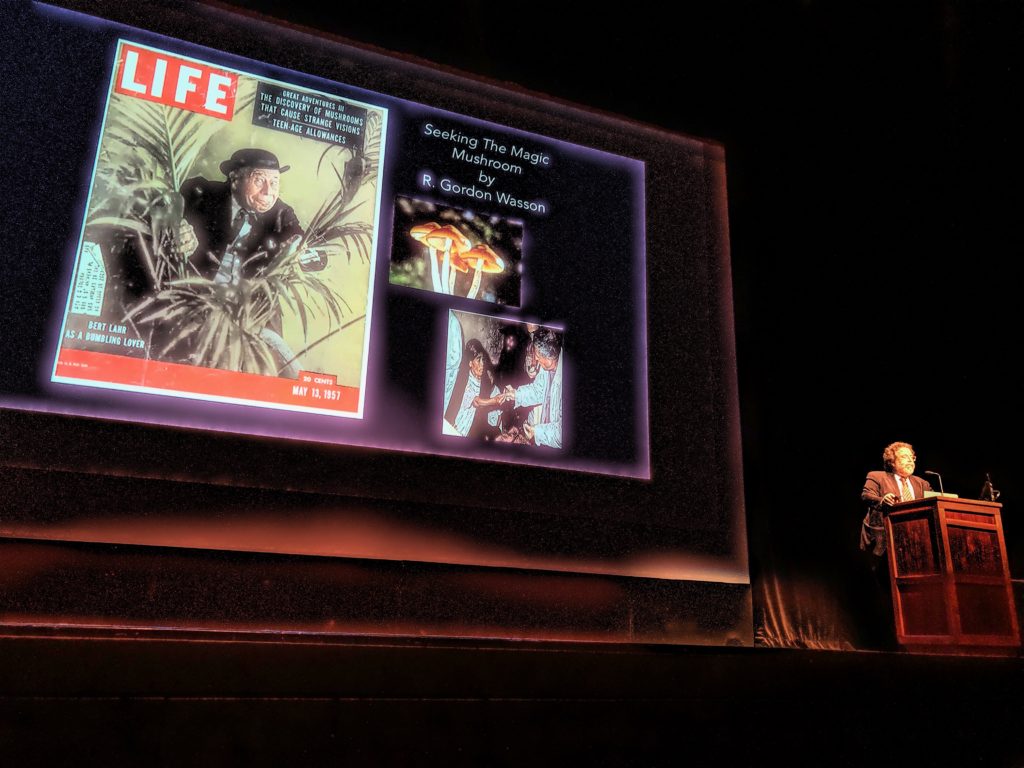
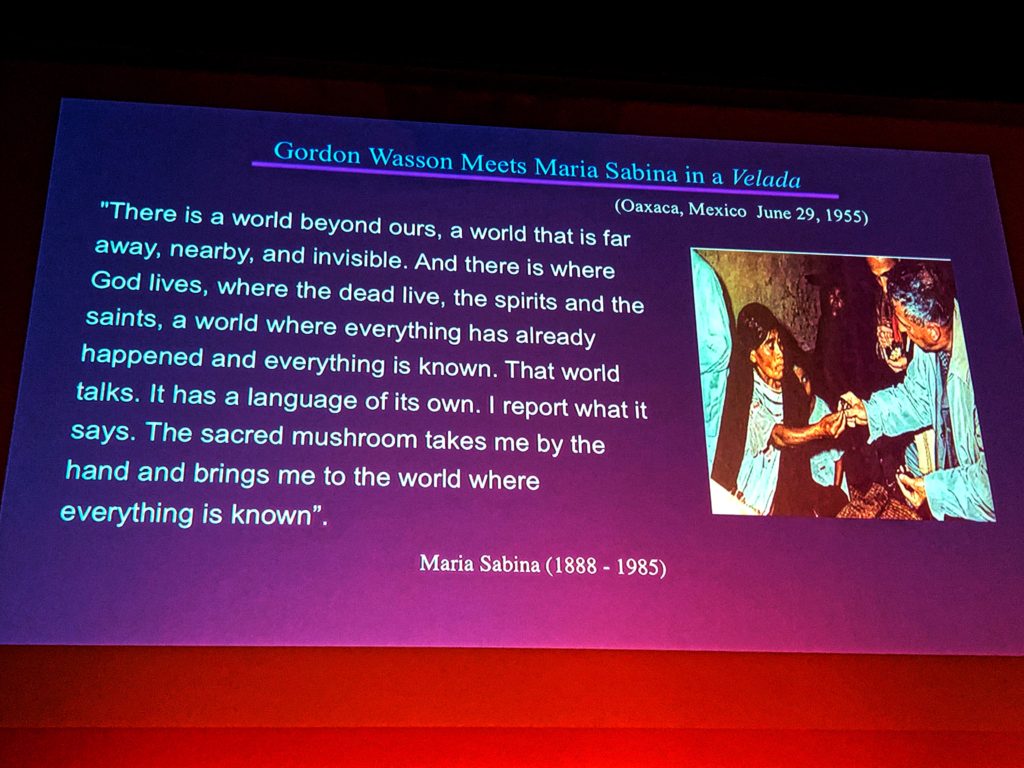
LEARN MORE: SEEKING THE MAGIC MUSHROOM
LEARN MORE: Maria Sabina: Mother of the Holy Children
These drugs clearly provoke powerful, transcendent, ‘peak’ experiences. “Even (the actor) Cary Grant used LSD during psychoanalysis in the middle of the last century,” noted Dr. Bossis, “and wrote about it in Good Housekeeping magazine! He described how it changed his own life for the better…”
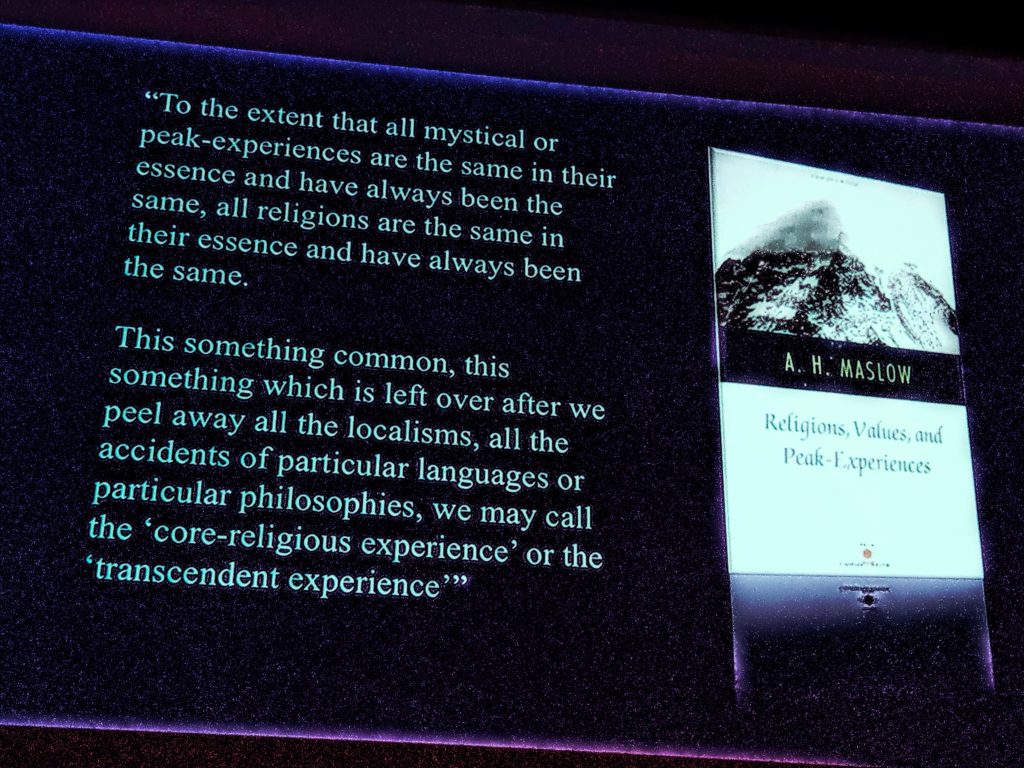
LEARN MORE: A theory of human motivation
LEARN MORE: Renovating the Pyramid of Needs: Contemporary Extensions Built Upon Ancient Foundations
LEARN MORE: Cary Grant Was Once One of LSD’s Biggest Fans
LEARN MORE: Cary in the Sky with Diamonds

Dr. Bossis also introduced us to Walter Norman Pahnke, a Psychology graduate student of Timothy Leary and Richard Alpert (a.k.a. Ram Dass) at Harvard University, who was fascinated by how psychedelic ‘trips’ were similar to accounts of intense religious or ‘mystical’ experiences…
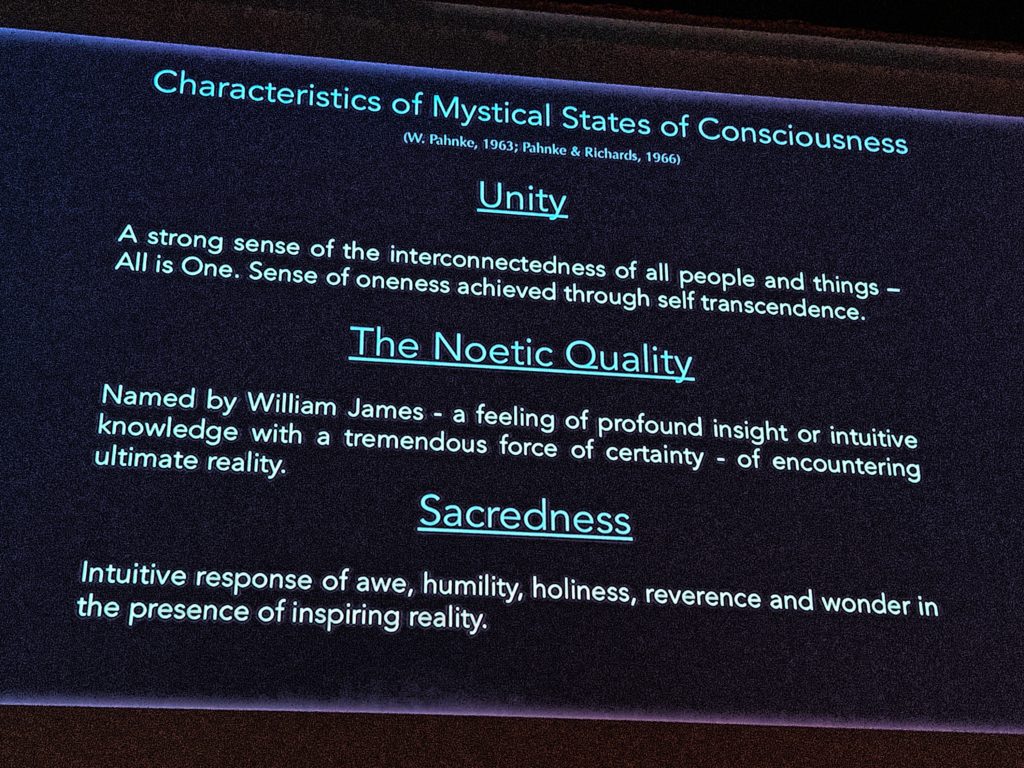
Characteristics of mystical states of consciousness include a sense of oneness or unity, awe and wonder (or ‘sacredness’), a deeply felt positive mood, ineffability, and ‘noetic quality,’ a term coined by William James to describe a sense of overwhelming, convincing insight.
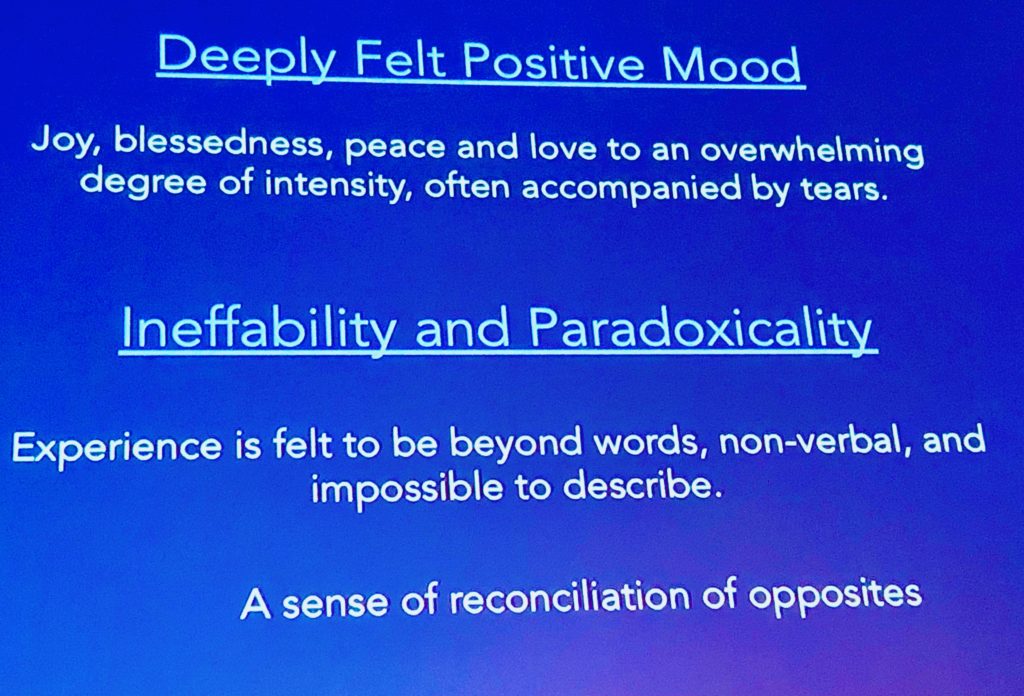
LEARN MORE: Mystical states of consciousness: neurophysiological and clinical aspects
LEARN MORE: The physiology of meditation and mystical states of consciousness
“Our normal waking consciousness, rational consciousness as we call it, is but one special type of consciousness, whilst all about it, parted from it by the filmiest of screens, there lie potential forms of consciousness entirely different. We may go through life without suspecting their existence; but …no account of the universe in its totality can be final which leaves these other forms of consciousness quite disregarded. How to regard them is the question — for they are so discontinuous with ordinary consciousness. Yet they may determine attitudes though they cannot furnish formulas, and open a region though they fail to give a map…”
–William James, from The Varieties of Religious Experience

Pahnke received his Ph.D. in 1963 after submitting a thesis titled “An Analysis of the Relationship Between Psychedelic Drug Experiences and the Mystical Consciousness.” In it he described the results of his ‘Good Friday experiment,’ “perhaps the most famous study in the psychology of religion,” which involved administering psilocybin to theology students, with profound and ongoing effects on their lives…
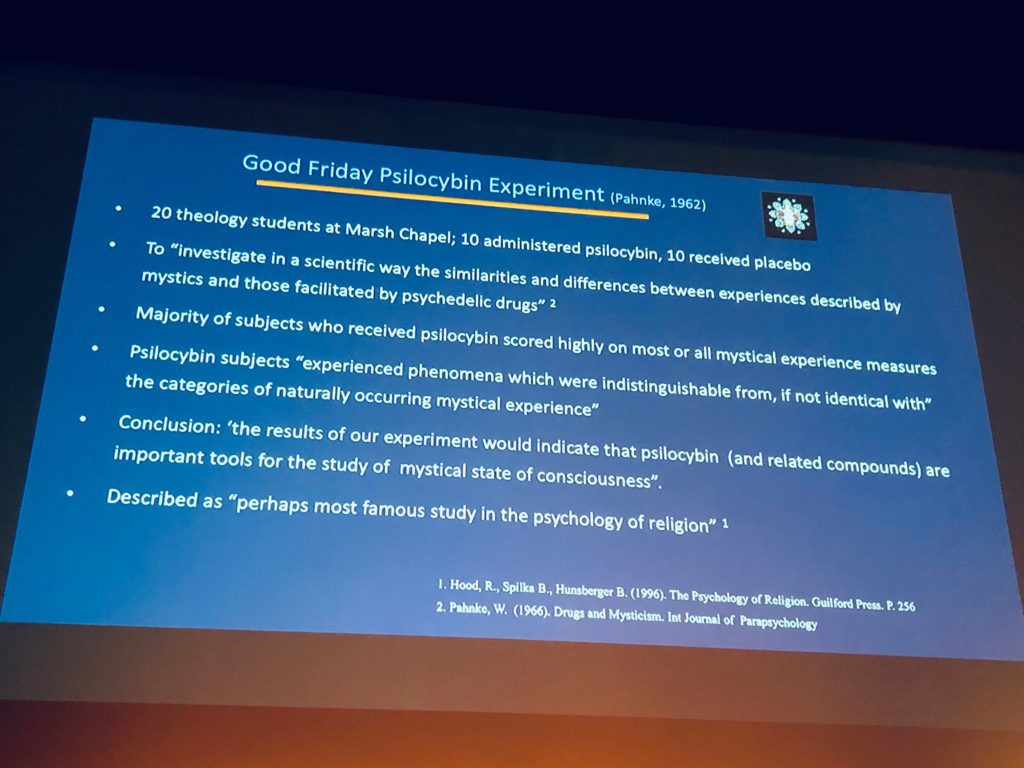
Decades later, researchers tracked down many of Pahnke’s original subjects, and they remained deeply impacted by this experience…

It was “not all peaches and cream,” noted Dr. Bossis. “This was a serious confrontation, and there was also great sadness. It opened them to incredible bliss and beauty, insight and acceptance, but also the transience of life. It was often bittersweet.”
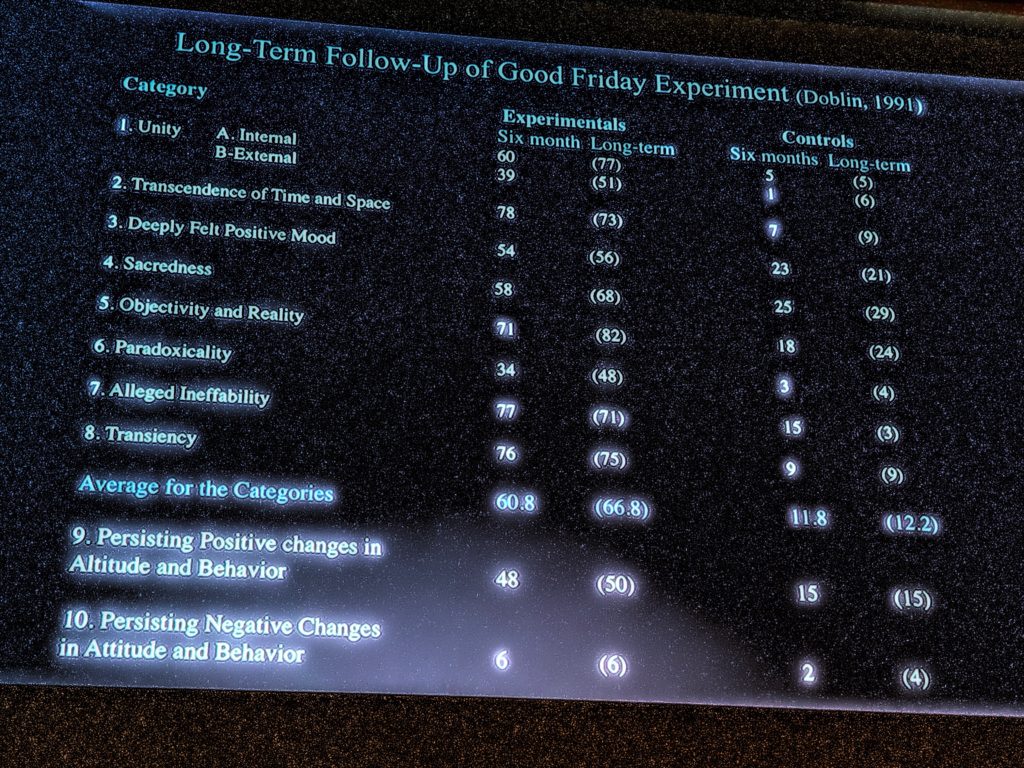
LEARN MORE: An Analysis of the Relationship Between Psychedelic Drug Experiences and the Mystical Consciousness
LEARN MORE: Pahnke’s “Good Friday experiment”: A long-term follow-up and methodological critique
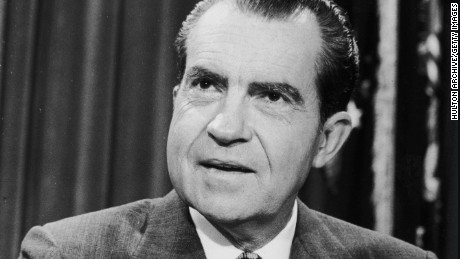
“Yet Richard Nixon,” Dr. Bossis explained, “killed the research” with his government’s racist and discriminatory ‘War on Drugs.’ “Good medicine was taken out of research because of a cultural problem…”
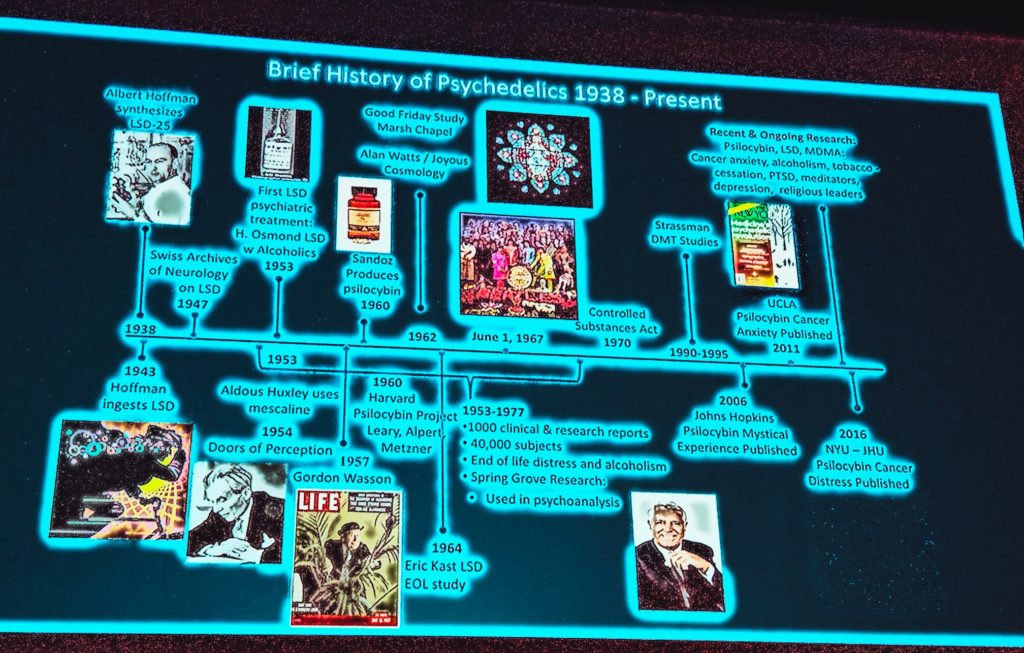
LEARN MORE: The Federal Controlled Substances Act: Schedules and Pharmacy Registration
LEARN MORE: The War on Drugs Halted Research Into the Potential Benefits of Psychedelics
LEARN MORE: A Brief History of the Drug War
“LSD is a psychedelic drug which occasionally causes psychotic behavior in people who have NOT taken it.”
― Timothy Leary
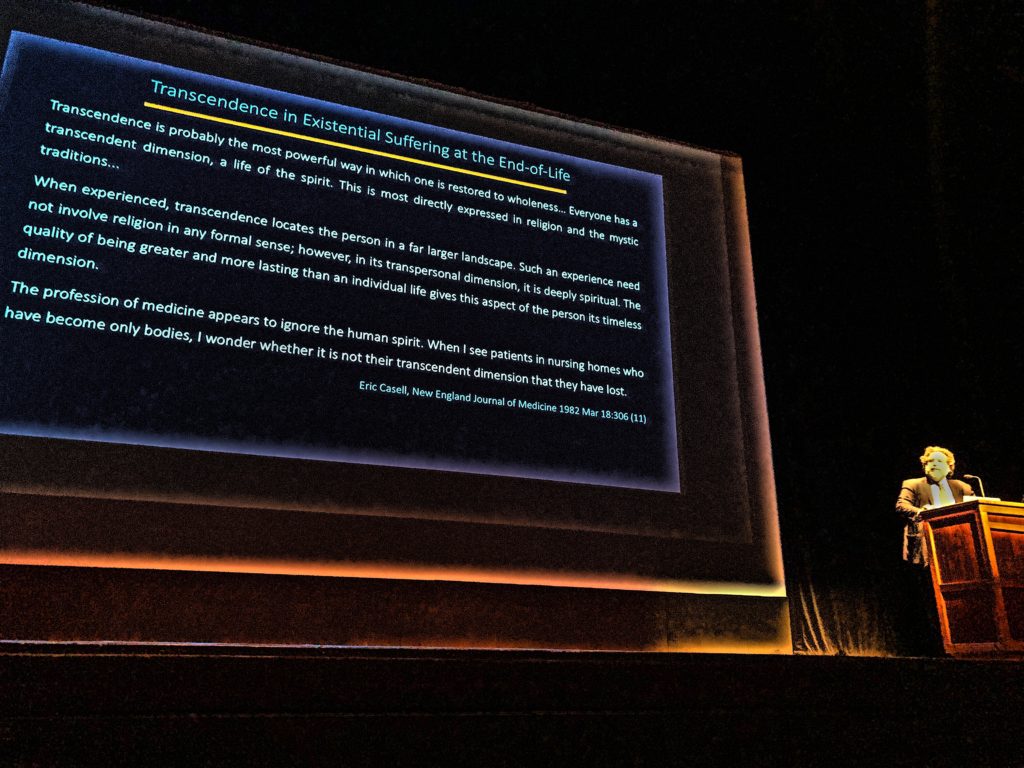
But this is finally changing…
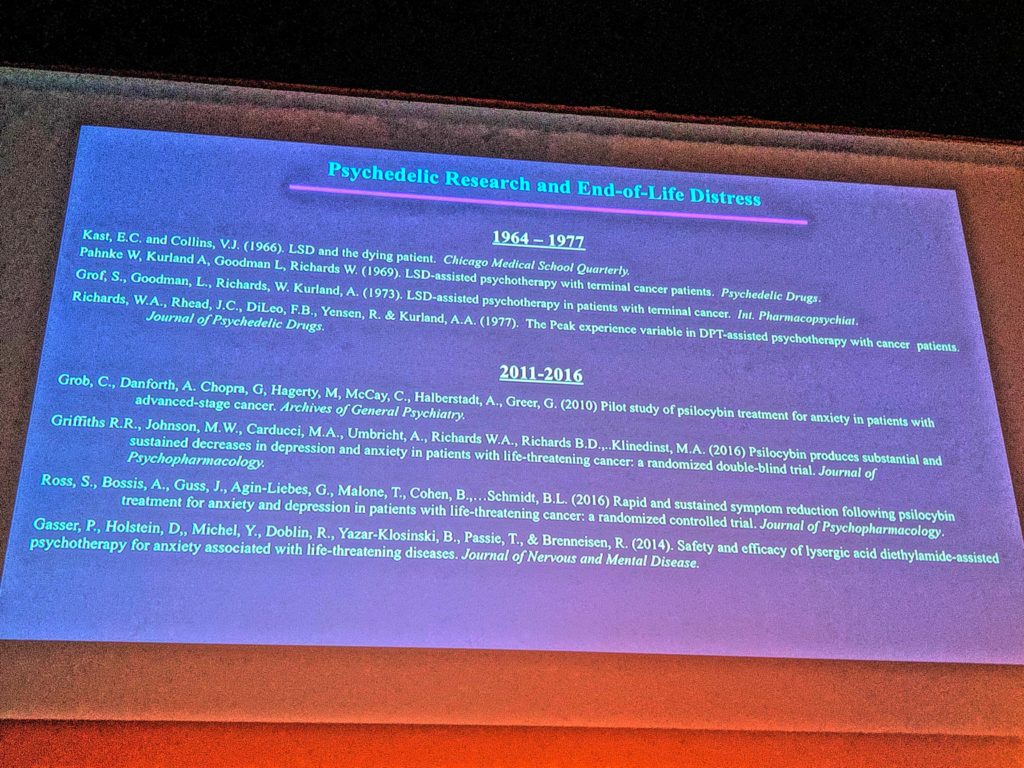
“How do we offer meaning and transcendence at end of life?” asked Dr. Bossis.
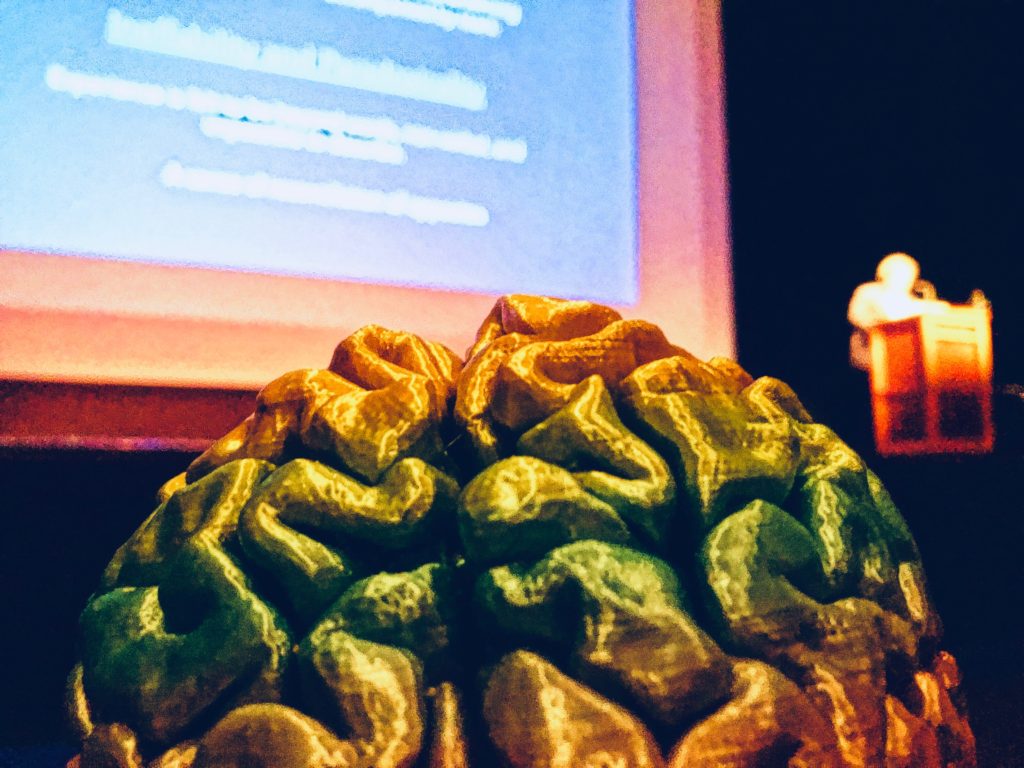
Dr. Bossis eloquently described his own research on psilocybin for the treatment of anxiety related to a diagnosis of terminal cancer. “Clinically significant anxiety and depression are common in these patients,” he explained.
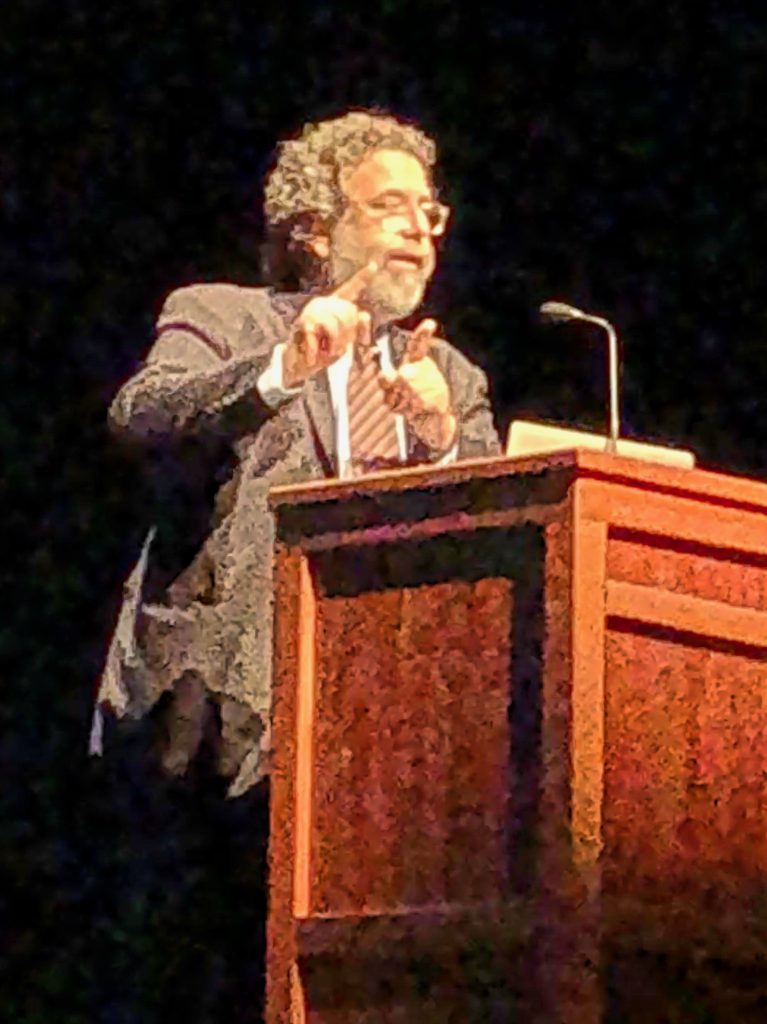
The NYU Psilocybin/Cancer Anxiety Study offered psilocybin to 29 individuals with terminal cancer, most of them patients at NYU Langone’s Perlmutter Cancer Center. “Half were agnostic or atheist,” he noted, “unlike those in Pahnke’s Good Friday experiment.”
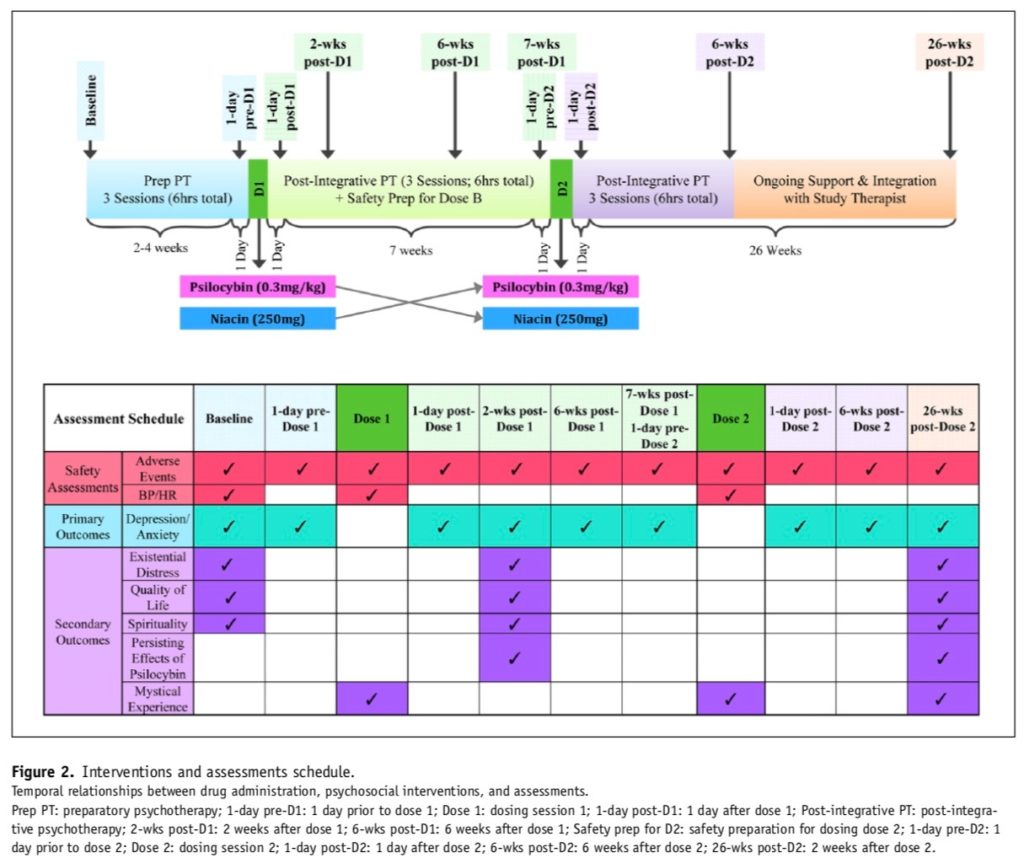
“Setting,” emphasized Dr. Bossis, “is so important.” After initial preparatory psychotherapy in a comfortable room, his subjects received either psilocybin (“a moderate dose,” 0.3 mg/kg) or niacin, a vitamin (B3) without psychoactive effects.
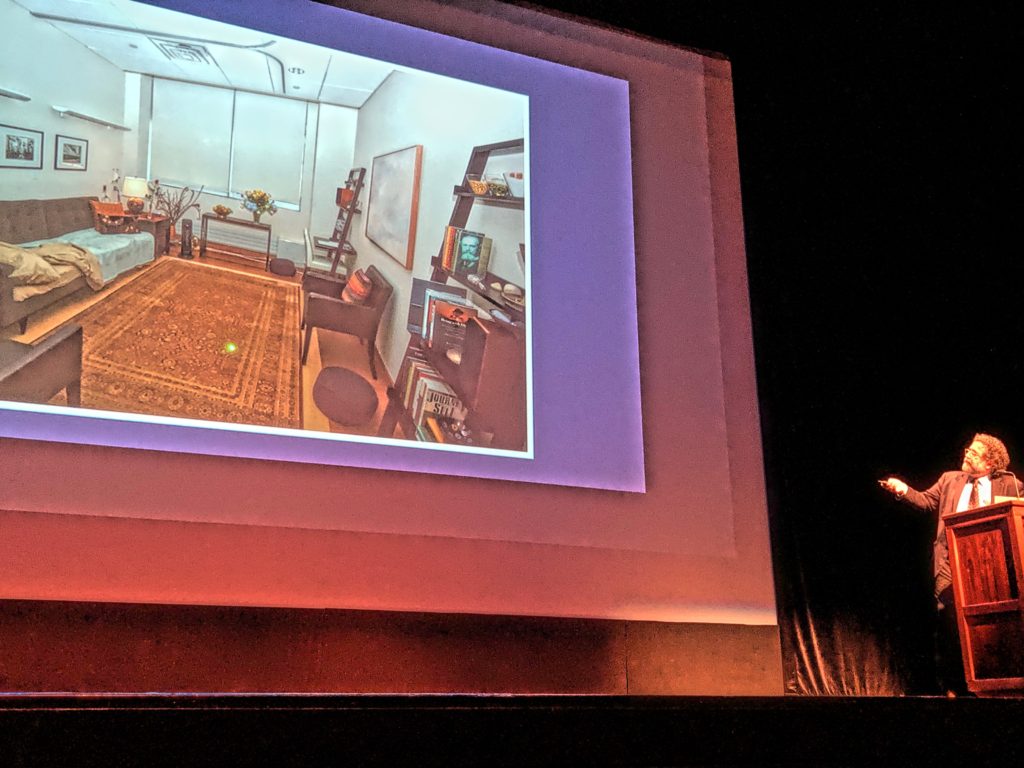
This was followed by more therapy, and six weeks later the subjects took another pill. If they’d received psilocybin for their first dose, they were now given niacin, and vice versa (this was the ‘crossover’ point in the study).

Participants were assessed using a large number of subjective questionnaires, including the Hospital Anxiety and Depression Scale (HADS), the Beck Depression Inventory (BDI), and the Spielberger State-Trait Anxiety Inventory (STAI). And they revealed “remarkable changes” after administration of psilocybin…
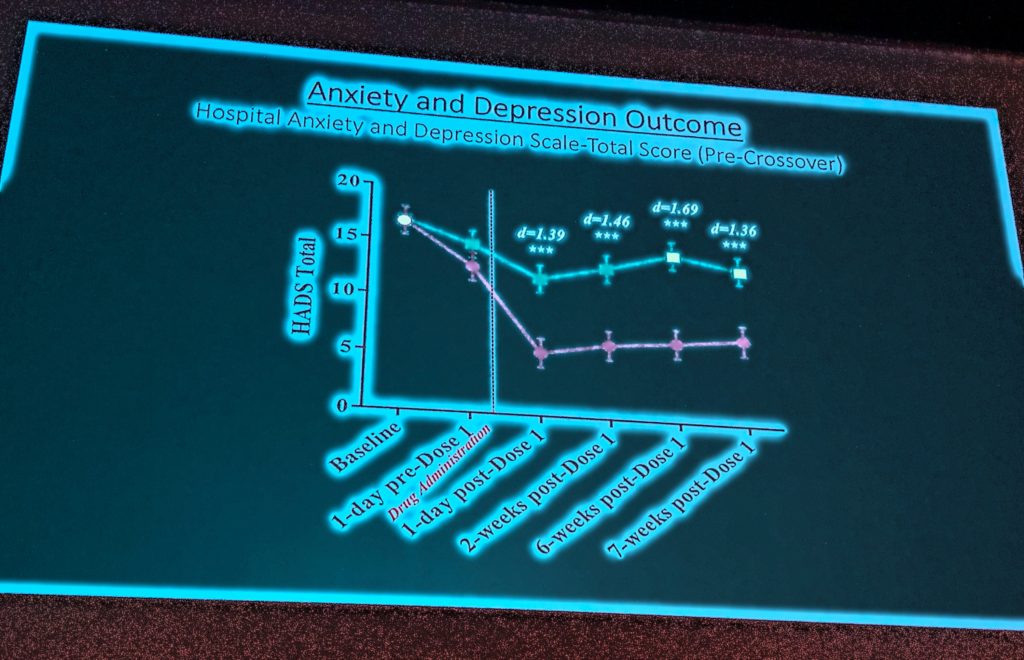
These were “mind-blowing results,” declared Dr. Bossis. “Anxiety, depression drop off and this is sustained for eight months. We’re still following them. There is love, love for oneself, and a profound sense of love and forgiveness for everyone in your life.”
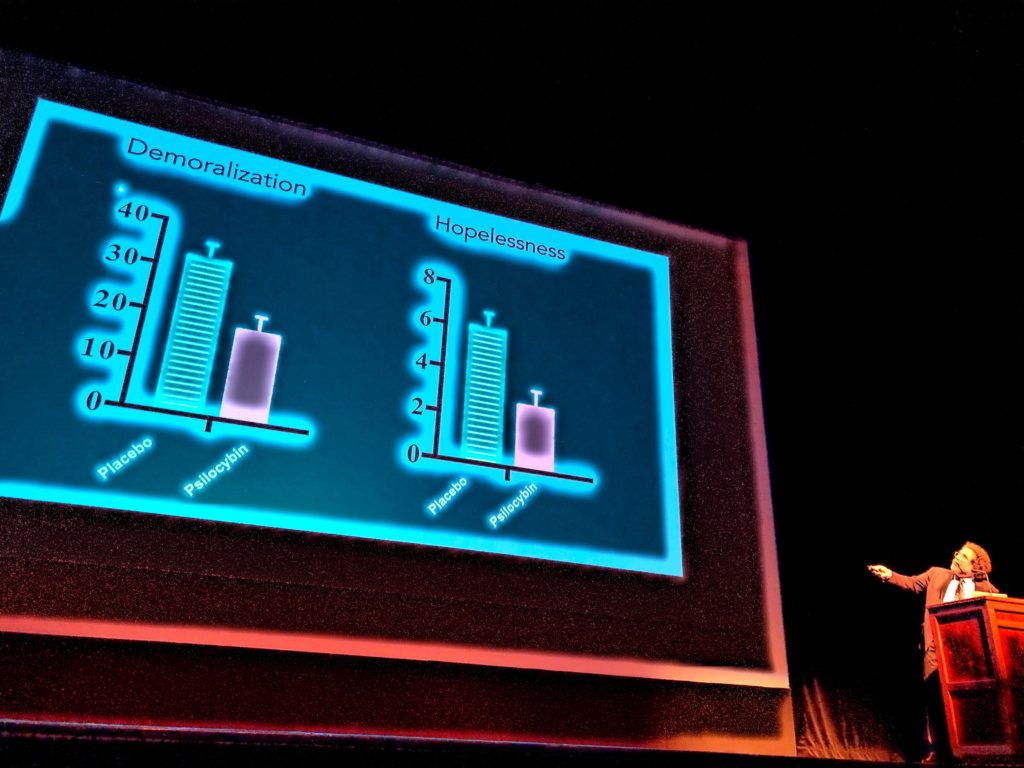
“I felt this constant state of becoming – I felt gratitude like I never felt before in my life. I felt totally welcome. Everything is love.”
-Participant in NYU Psilocybin/Cancer Anxiety Project
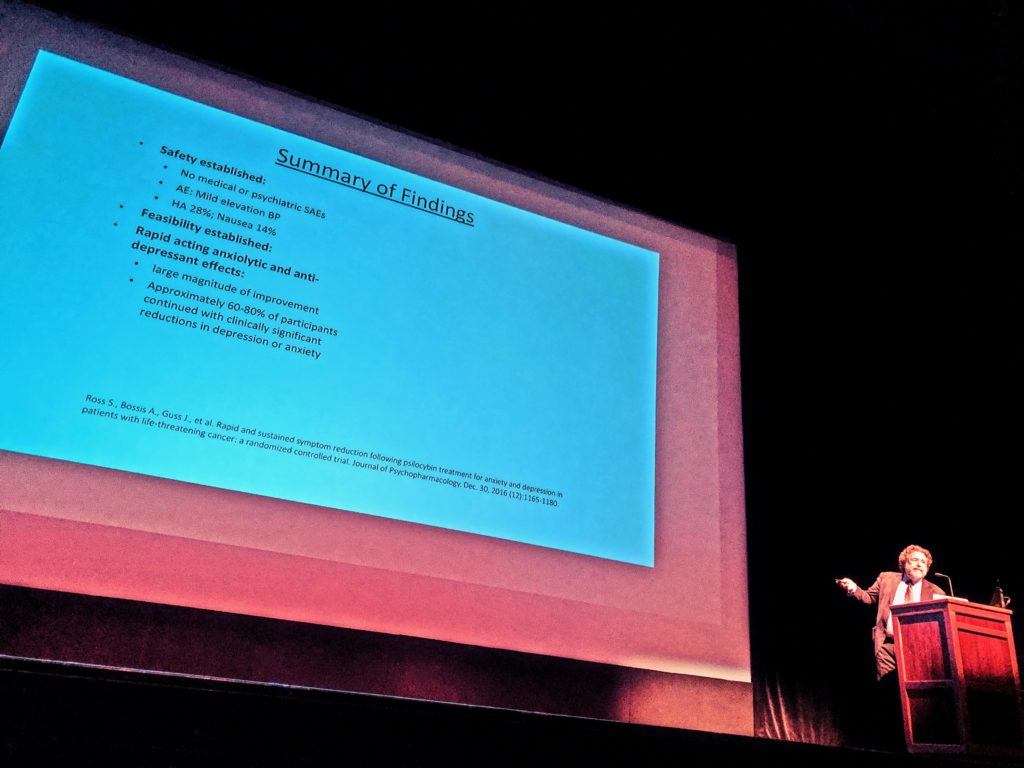
So what’s going on here..?
“Why would we evolve a feeling of transcendence?”
― Anthony Bossis
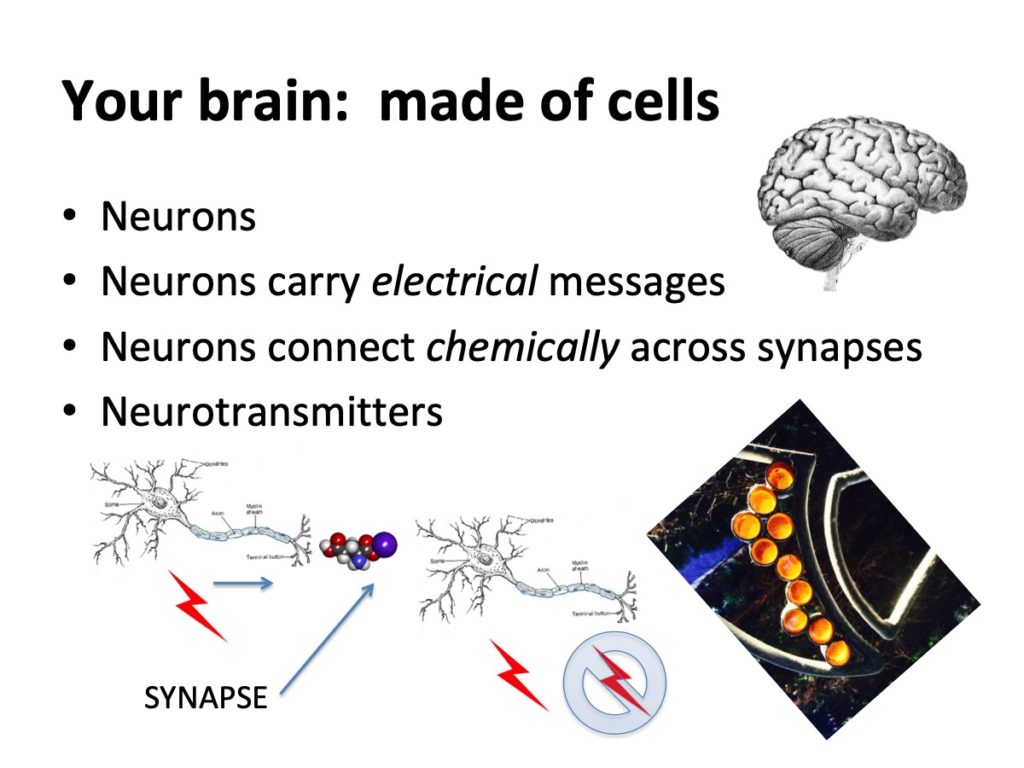
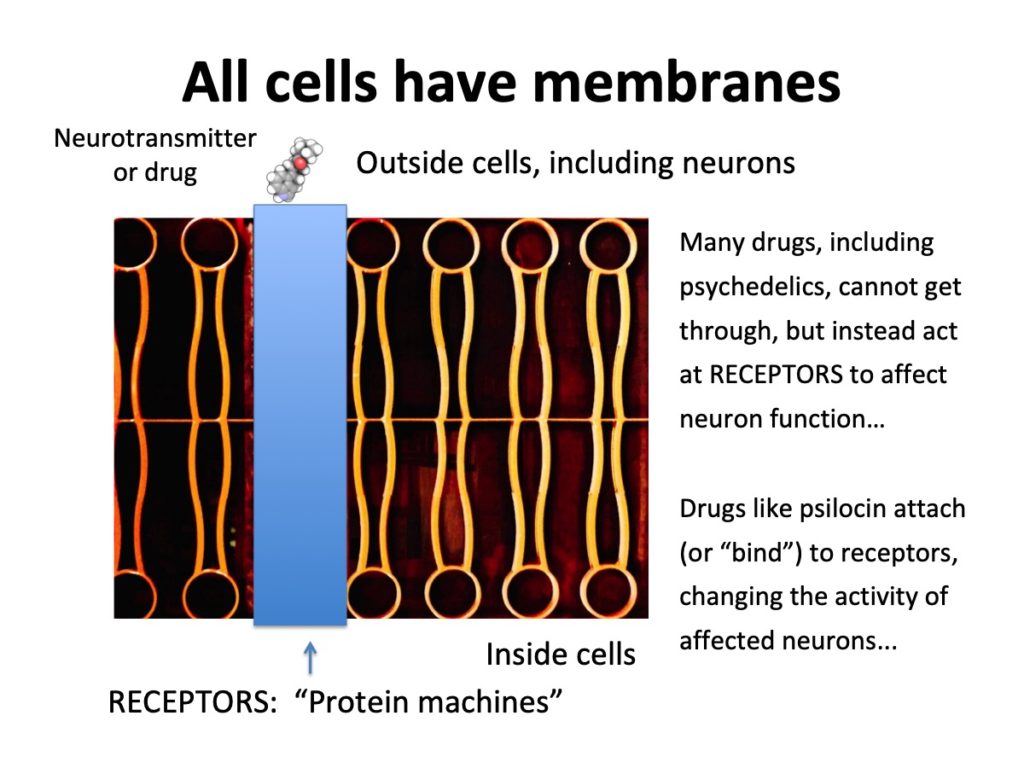

LEARN MORE: The neurobiology of psychedelic drugs: implications for the treatment of mood disorders
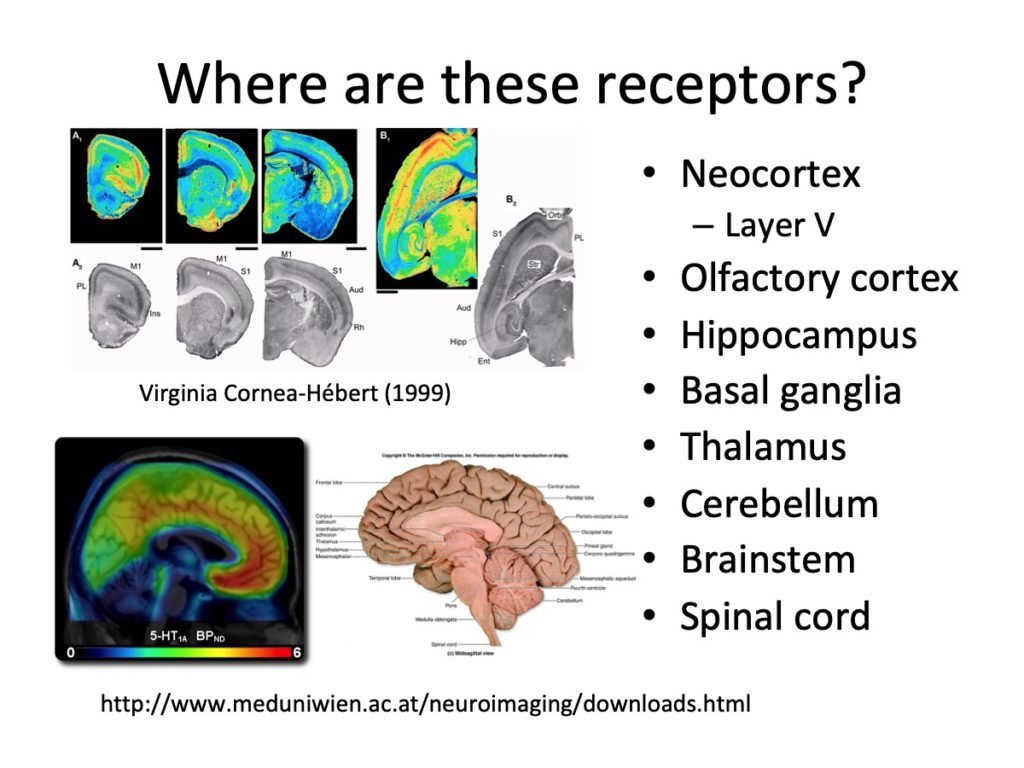
“One good way to understand a complex system is to disturb it and then see what happens.”
― Michael Pollan
There are clear changes in perception in response to these drugs…
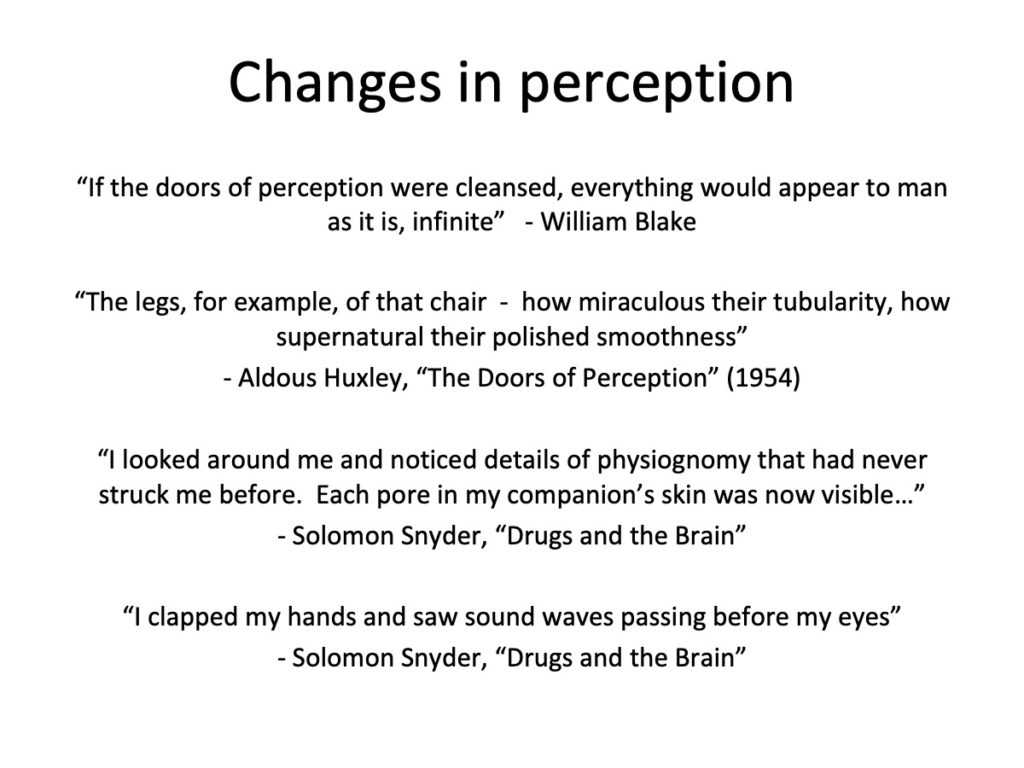
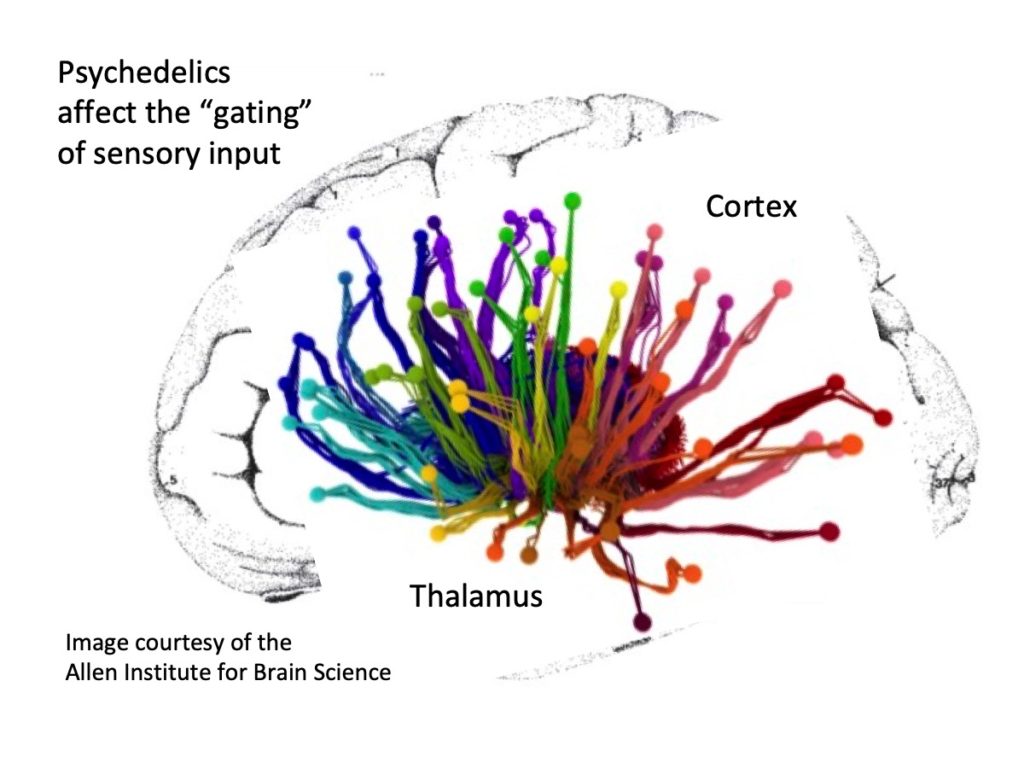
LEARN MORE: Brain mechanisms of hallucinogens and entactogens

LEARN MORE: Mescaline and LSD facilitate the activation of locus coeruleus neurons by peripheral stimuli
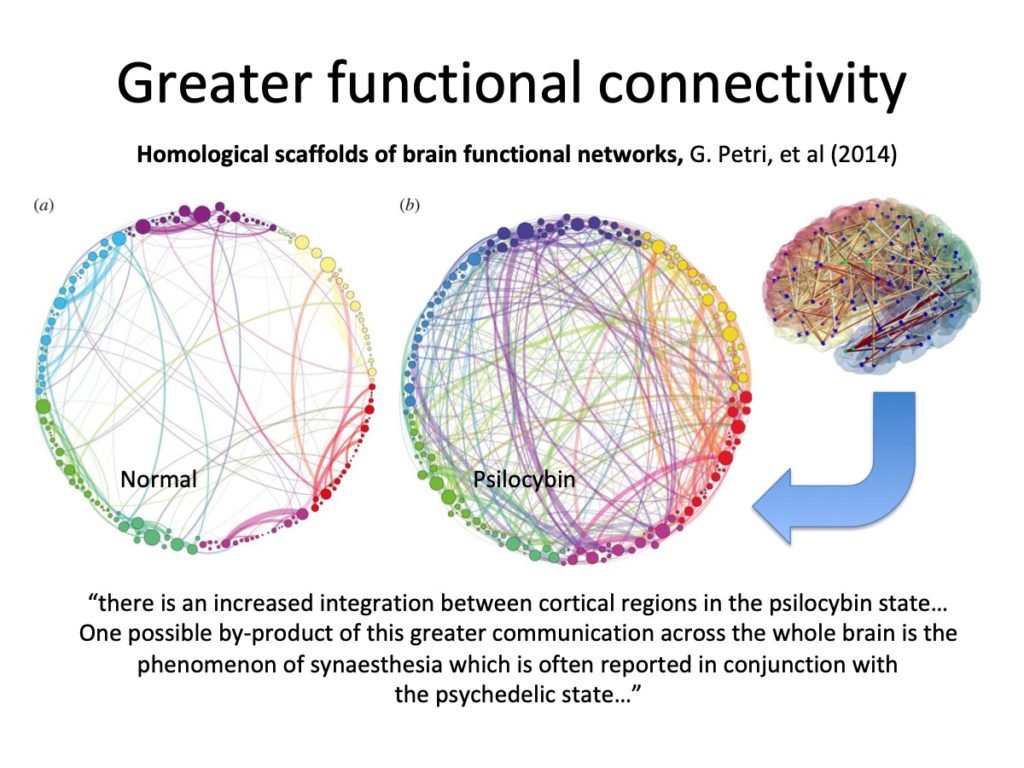
LEARN MORE: Homological scaffolds of brain functional networks
Psychedelics also generate profound changes in our sense of self...
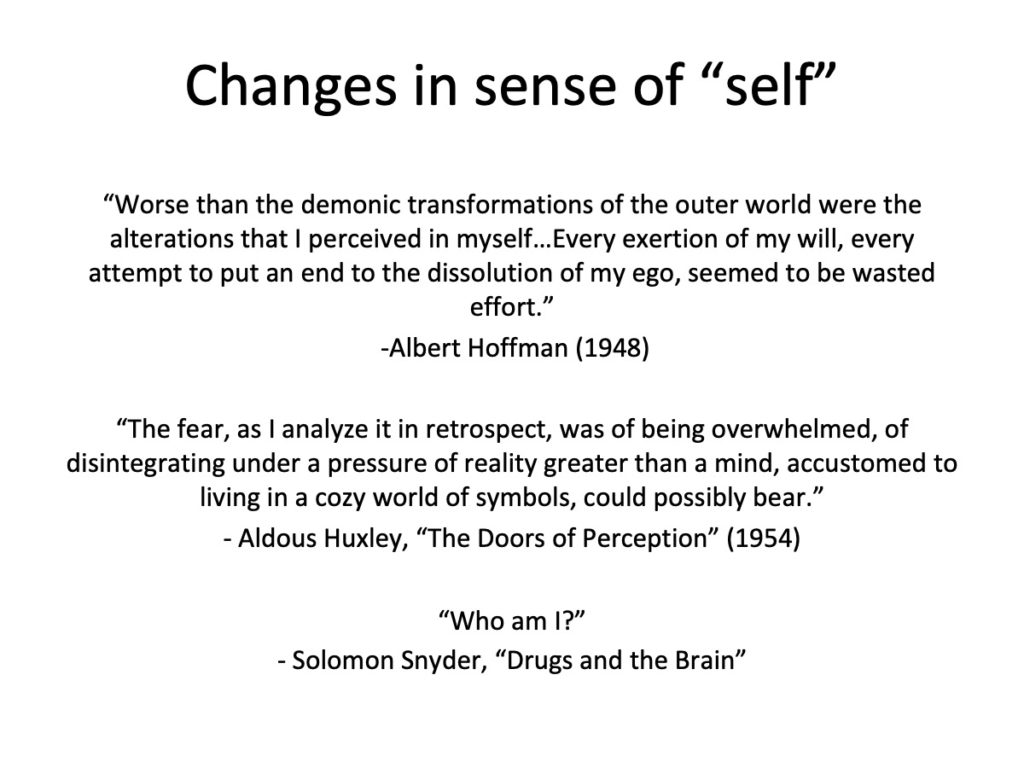
Multiple area of cortex, connected by long range axonal connections, form distributed networks which coordinate their activity when we engage in specific forms of cognition. For example, when we focus on specific tasks and pay attention, or when we ruminate on ourselves and our memories and circumstances, different networks are deployed…
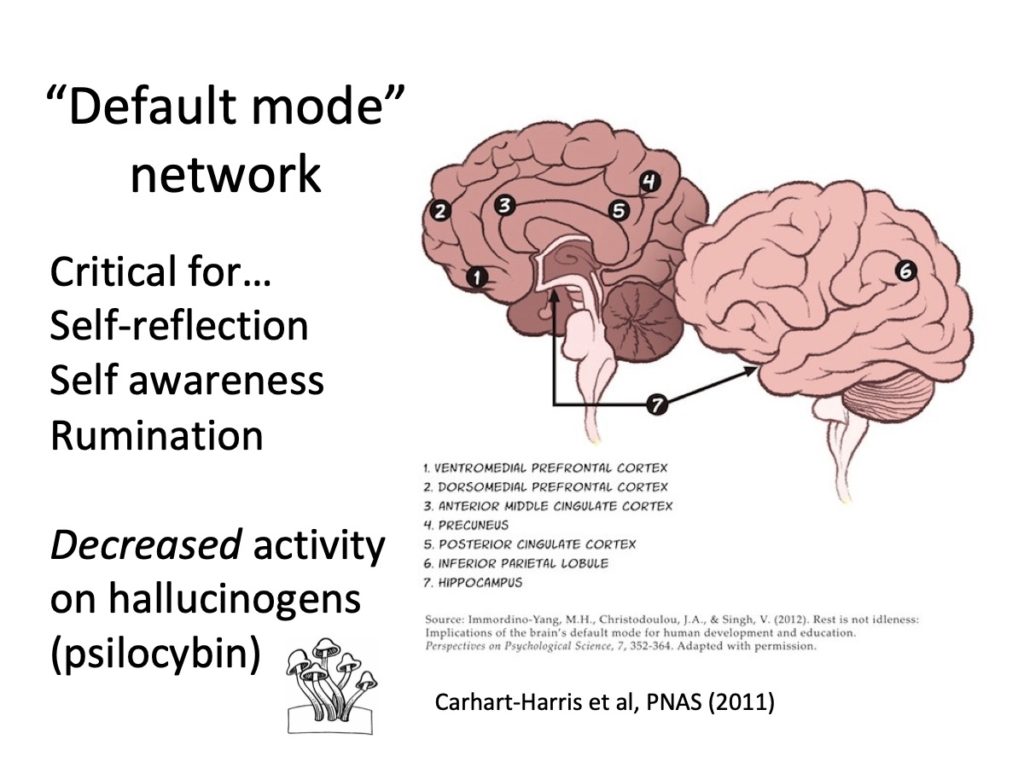
Psilocybin disrupts functionally linked brain networks during a “trip,” including one known as the default mode network (DMN), which is potentially involved in self-reflection and rumination. However, it also increases connectivity between networks that are not typically engaged at the same time in conscious adults. In addition, longer term increases in DMN functional connectivity are found in those reporting relief from depression after taking psychedelics…
LEARN MORE: Neural correlates of the psychedelic state as determined by fMRI studies with psilocybin
LEARN MORE: Psilocybin for treatment-resistant depression: fMRI-measured brain mechanisms
Perhaps, in those with terminal cancer, it is helpful to have brain networks disrupted for a time, while on a beautiful rug at NYU, unable to ruminate or reflect on self or circumstances, with your mind focused on the exceptional salience, novelty and beauty of the world you perceive around you. And then, with support from therapists, thoughtful reassessment can strengthen these networks and craft a new story of self acceptance, and love.

Our thanks to Kate Stout and the OHSU Brain Institute for another wonderful series of Brain Awareness talks!


